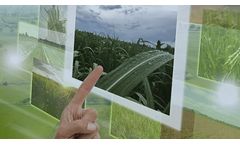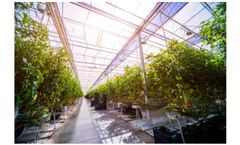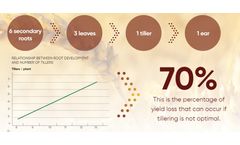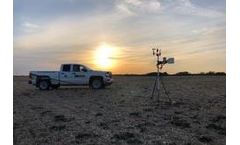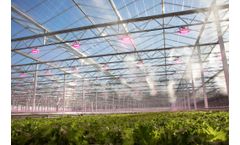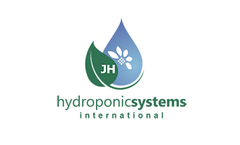Crops In Developing Articles & Analysis: Older
70 articles found
The concept of crop rotation dates back thousands of years, with ancient civilizations such as the Mesopotamians and Egyptians employing rudimentary forms of rotation to sustain their agricultural endeavors. The basic principle behind crop rotation is alternating the types of crops grown in a particular field over time to improve soil fertility, control pests, and maximize yields. In traditional ...
The irrigation sector has a key role to play in ensuring food security in the current global context, marked by a changing geopolitical situation, climate change and the scarcity of water resources. Thus, agricultural irrigation is facing new challenges that mean irrigation associations will need to digitalize their processes. Initiatives such as Spain’s PERTE (Recovery, Transformation and ...
ByIdrica
This can help reduce water wastage and ensure that crops receive adequate moisture during critical growth stages. Crop Monitoring: Portable soil EC detectors can also be used to monitor crop health and growth rates. By taking regular soil EC readings at different stages of crop development, farmers can identify ...
ByJXCT
This helps farmers determine the precise amount of water required by crops at different growth stages. By delivering the right amount of water at the right time, precision irrigation enhances water use efficiency while promoting healthy crop growth. Fine-Tuning Fertilizer Application: Nutrient management is crucial for crop ...
Naturally, this is a huge trigger for productive crops and maximum yield. New methods of seed treatment are therefore being explored. ...
This means John hit the ground running and as the crop modelling functionality of the main Crop4Sight programme collects data on field performance, he’ll build up a databank to inform management of future crops. ...
Satellite remote sensing data is critical for monitoring soil, drought, snow cover, and crop development. Satellite rainfall estimates, for example, assist farmers in planning the quantity and timing of irrigation required for their crops. ...
Under this project, xx datasets from textiles and 25 datasets for agricultural crops were developed which will be available in the ecoinvent database. ...
The staff of the Water Management Research Laboratory (USDA-ARS-Fresno) developed a highly efficient irrigation and management method which minimized and sometimes even eliminated the downward movement of soluble nitrate-N below the root zone of field crops. ...
Crop steering - an introduction. Crop steering is a fairly new term that’s increased in popularity recently, but some growers have been using crop steering techniques for many years. ...
Compared with SO42 -, the effect of sulfur as sulfur fertilizer on crops depends on the particle size, application rate, application mode, sulfur oxidation performance of soil and environmental conditions. ...
The number of tillers is fundamental to crop yield development. It will compensate for the loss of plants during sowing due to poor planting. ...
High yield reduction will be expected due to these cold waves, occurring after weeks of heat and crop development. During dormancy, grapevines can support temperatures as low as -15°C. ...
We explore how it can benefit farmers to increase yields and lower crop establishment input costs, as well as how it can fundamentally improve soil health and benefit the environment. ...
It is no surprise that the advancement of technology in agriculture over the last 20 years has shifted how farms operate. In response to these changes, women have continued to rise up and perform in the ag-tech world. Meet Moriah Rataczak, a precision agronomist at Gumz Farms in Endeavor, Wisconsin, and an avid Ag Leader fan. As she pursued a career in ag, she found out what it takes to be a ...
Reducing production risks There have been years when we’ve seen moisture deficits at key growth stages negatively impact crop development. In these years, you may be wise to reduce production risks and might opt to forego additional inputs. ...
The knowledge among both growers and researchers is growing, and with it, the certainty and the quality of the harvest are increasing. Think of recent developments such as lighting according to the DLI (Daily Light Integral) concept instead of the classic fixed hour schedule: it is not sunny every day, but the crops still need an amount of sunlight every day. ...
ByOreon
The fertilizer produced by bio organic fertilizer equipment can improve soil ecological environment and change soil microbial flora, and play a more important role in reducing crop diseases and insect pests. In the process of microbial growth and reproduction, it can secrete a variety of antibiotics and plant growth and elements. It can not only inhibit the activities of plant ...
The Hydroponic system in soil is known as semi-Hydroponic. The need to rotate crops, developed mainly by family farmers in small areas, has influenced the investigation of new forms of growth to meet the demands of their necessities. ...
Elevated gutter systems were developed in response to the need to raise hydroponic crops off the floor to allow for aeration underneath plants, in addition to facilitating optimum work conditions above floor level. ...


